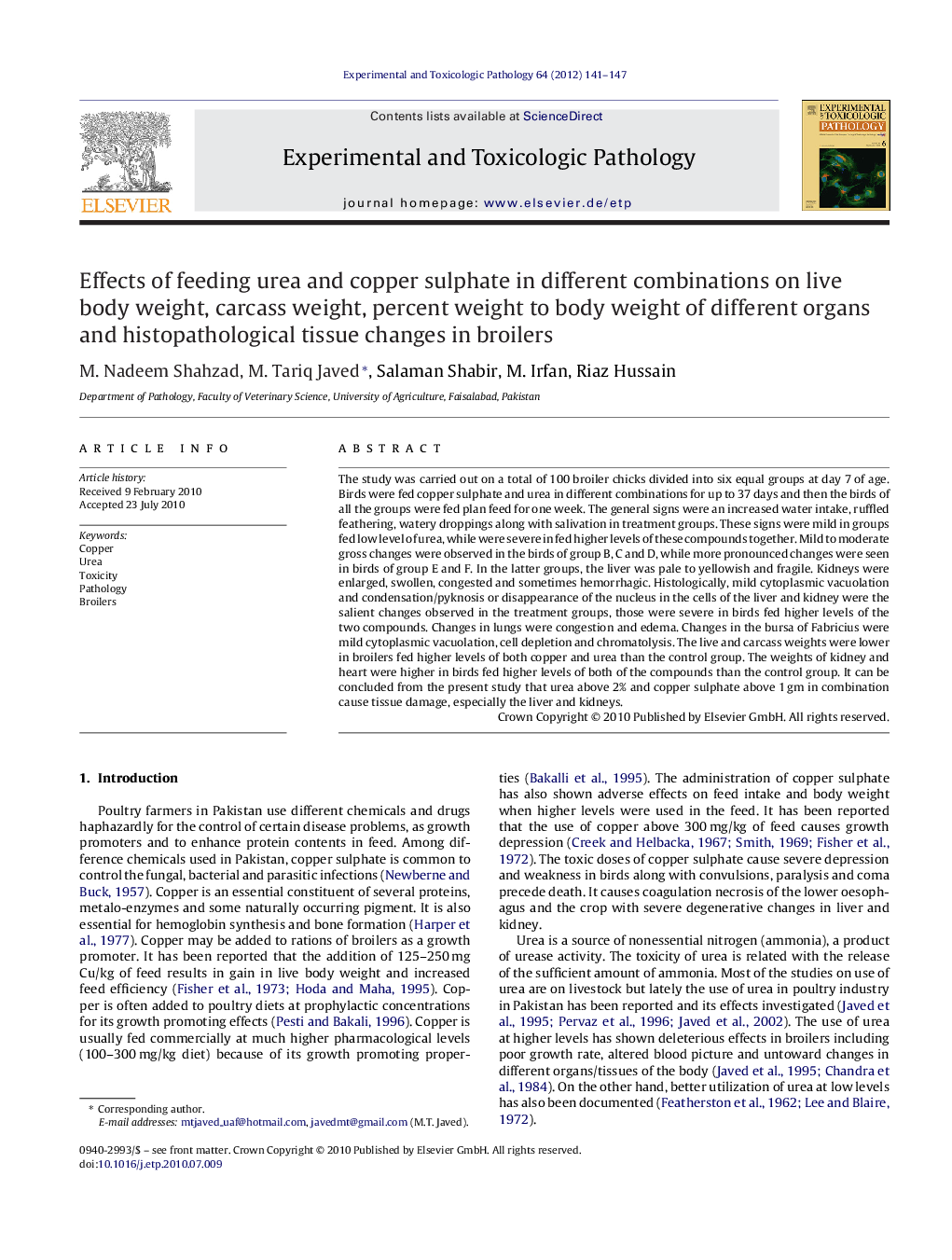| Article ID | Journal | Published Year | Pages | File Type |
|---|---|---|---|---|
| 2499189 | Experimental and Toxicologic Pathology | 2012 | 7 Pages |
The study was carried out on a total of 100 broiler chicks divided into six equal groups at day 7 of age. Birds were fed copper sulphate and urea in different combinations for up to 37 days and then the birds of all the groups were fed plan feed for one week. The general signs were an increased water intake, ruffled feathering, watery droppings along with salivation in treatment groups. These signs were mild in groups fed low level of urea, while were severe in fed higher levels of these compounds together. Mild to moderate gross changes were observed in the birds of group B, C and D, while more pronounced changes were seen in birds of group E and F. In the latter groups, the liver was pale to yellowish and fragile. Kidneys were enlarged, swollen, congested and sometimes hemorrhagic. Histologically, mild cytoplasmic vacuolation and condensation/pyknosis or disappearance of the nucleus in the cells of the liver and kidney were the salient changes observed in the treatment groups, those were severe in birds fed higher levels of the two compounds. Changes in lungs were congestion and edema. Changes in the bursa of Fabricius were mild cytoplasmic vacuolation, cell depletion and chromatolysis. The live and carcass weights were lower in broilers fed higher levels of both copper and urea than the control group. The weights of kidney and heart were higher in birds fed higher levels of both of the compounds than the control group. It can be concluded from the present study that urea above 2% and copper sulphate above 1 gm in combination cause tissue damage, especially the liver and kidneys.
